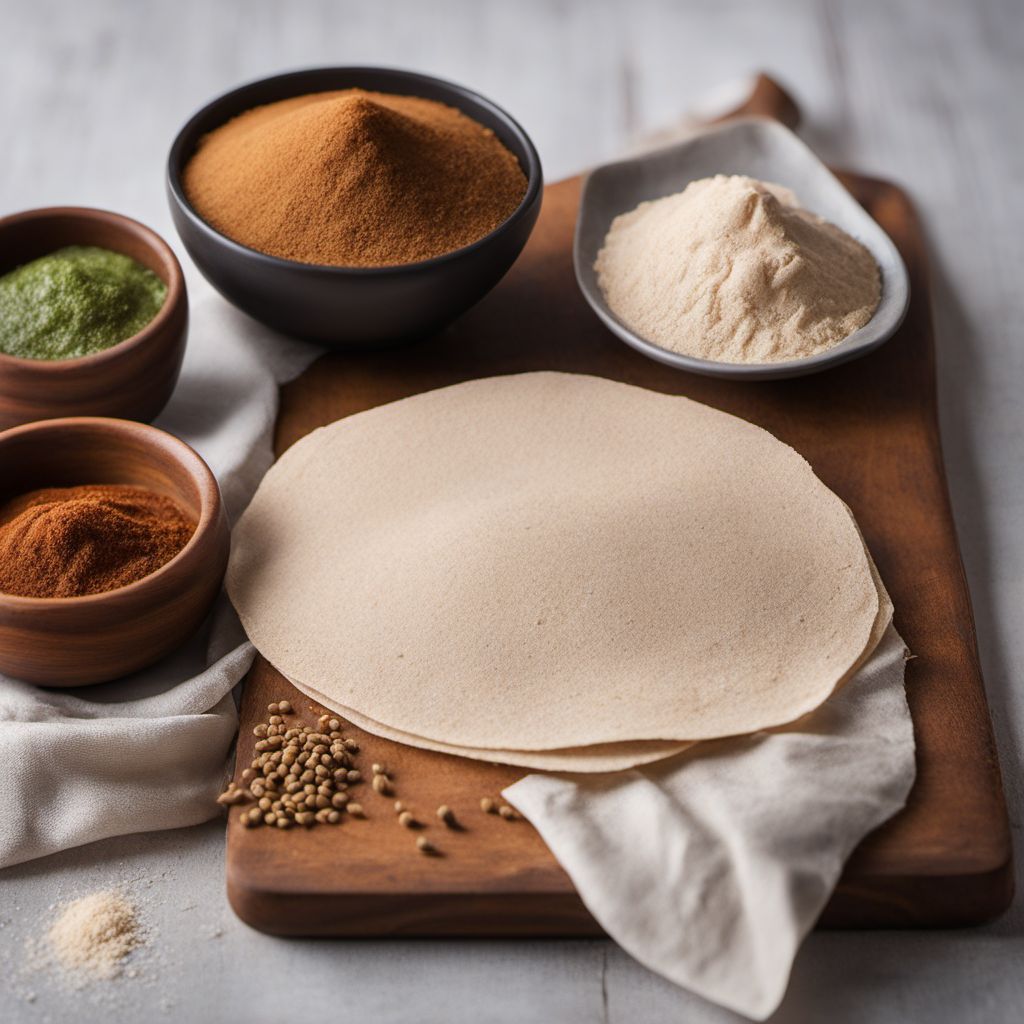
Recipe
Homemade Injera: Authentic Ethiopian Flatbread
Spongy Delight: Mastering the Art of Ethiopian Injera
4.8 out of 5
Injera is a staple in Ethiopian cuisine, known for its unique spongy texture and tangy flavor. This traditional flatbread is made from fermented teff flour batter and is a versatile accompaniment to various Ethiopian dishes.
Metadata
Preparation time
10 minutes
Cooking time
20 minutes
Total time
34 hours (including fermentation time)
Yields
4 servings
Preparation difficulty
Easy
Suitable for
Vegan, Vegetarian, Gluten-free, Dairy-free, Nut-free
Allergens
N/A
Not suitable for
Paleo, Keto, Low-carb, High-protein, Grain-free
Ingredients
-
2 cups (240g) teff flour 2 cups (240g) teff flour
-
1 cup (240ml) water 1 cup (240ml) water
-
1/2 teaspoon active dry yeast 1/2 teaspoon active dry yeast
-
1/2 teaspoon salt 1/2 teaspoon salt
-
Vegetable oil, for greasing the pan Vegetable oil, for greasing the pan
Nutrition
- Calories (kcal / KJ): 180 kcal / 753 KJ
- Fat (total, saturated): 1g, 0g
- Carbohydrates (total, sugars): 38g, 0g
- Protein: 6g
- Fiber: 6g
- Salt: 0.5g
Preparation
-
1.In a large bowl, combine the teff flour, water, yeast, and salt. Stir well until a smooth batter forms.
-
2.Cover the bowl with a clean kitchen towel and let the batter ferment at room temperature for 24 hours.
-
3.After fermentation, the batter will have a slightly sour smell. Stir the batter gently to incorporate any liquid that may have separated.
-
4.Heat a non-stick skillet or griddle over medium heat. Lightly grease the surface with vegetable oil.
-
5.Pour a ladleful of the batter onto the hot skillet, swirling it around to form a thin, circular shape.
-
6.Cook the injera for about 2 minutes until the edges start to lift and the surface is covered in bubbles.
-
7.Remove the injera from the skillet and let it cool on a wire rack. Repeat the process with the remaining batter.
Treat your ingredients with care...
- Teff flour — Ensure you are using 100% teff flour for an authentic taste and texture. If unavailable, you can substitute a mixture of half teff flour and half all-purpose flour.
Tips & Tricks
- Adjust the thickness of the injera by adding more or less batter to the skillet.
- Make sure the skillet is well-greased to prevent sticking.
- Serve the injera warm for the best taste and texture.
- Leftover injera can be stored in an airtight container in the refrigerator for up to 3 days.
- If you prefer a stronger sour taste, you can increase the fermentation time by an additional 12-24 hours.
Serving advice
Serve injera as a base for Ethiopian stews and dishes such as Doro Wat (spicy chicken stew) or Misir Wat (spiced lentil stew). Tear off pieces of injera and use them to scoop up the flavorful stews.
Presentation advice
Arrange the injera on a large platter, overlapping the pieces slightly to create an inviting display. Garnish with fresh herbs or sprinkle with berbere spice for an extra touch of color and flavor.
More recipes...
For Ethiopian cuisine » Browse all
More Ethiopian cuisine dishes » Browse all

Inguday tibs
Mushroom Tibs
Inguday tibs is a traditional Ethiopian dish that is made with mushrooms and a variety of spices. It is a flavorful and aromatic dish that is...

Fit-fit
Fit-fit is a traditional Ethiopian dish made with injera bread and spices. It is a flavorful and filling meal that can be enjoyed for breakfast,...

Hamli
Hamli is a traditional Ethiopian dish made with collard greens and spices. It is a popular vegetarian dish that is both flavorful and healthy.




